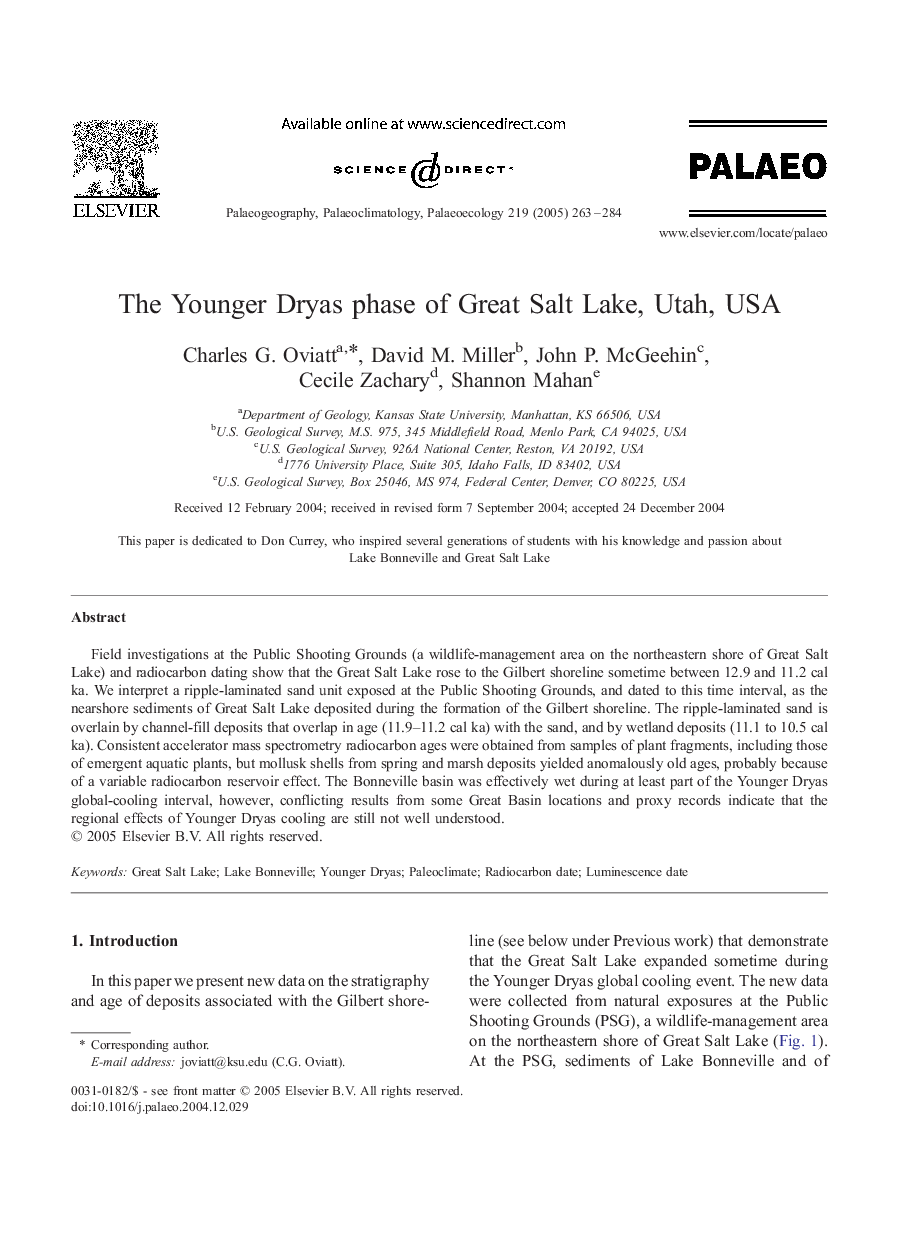| Article ID | Journal | Published Year | Pages | File Type |
|---|---|---|---|---|
| 9463069 | Palaeogeography, Palaeoclimatology, Palaeoecology | 2005 | 22 Pages |
Abstract
Field investigations at the Public Shooting Grounds (a wildlife-management area on the northeastern shore of Great Salt Lake) and radiocarbon dating show that the Great Salt Lake rose to the Gilbert shoreline sometime between 12.9 and 11.2 cal ka. We interpret a ripple-laminated sand unit exposed at the Public Shooting Grounds, and dated to this time interval, as the nearshore sediments of Great Salt Lake deposited during the formation of the Gilbert shoreline. The ripple-laminated sand is overlain by channel-fill deposits that overlap in age (11.9-11.2 cal ka) with the sand, and by wetland deposits (11.1 to 10.5 cal ka). Consistent accelerator mass spectrometry radiocarbon ages were obtained from samples of plant fragments, including those of emergent aquatic plants, but mollusk shells from spring and marsh deposits yielded anomalously old ages, probably because of a variable radiocarbon reservoir effect. The Bonneville basin was effectively wet during at least part of the Younger Dryas global-cooling interval, however, conflicting results from some Great Basin locations and proxy records indicate that the regional effects of Younger Dryas cooling are still not well understood.
Related Topics
Physical Sciences and Engineering
Earth and Planetary Sciences
Earth-Surface Processes
Authors
Charles G. Oviatt, David M. Miller, John P. McGeehin, Cecile Zachary, Shannon Mahan,
